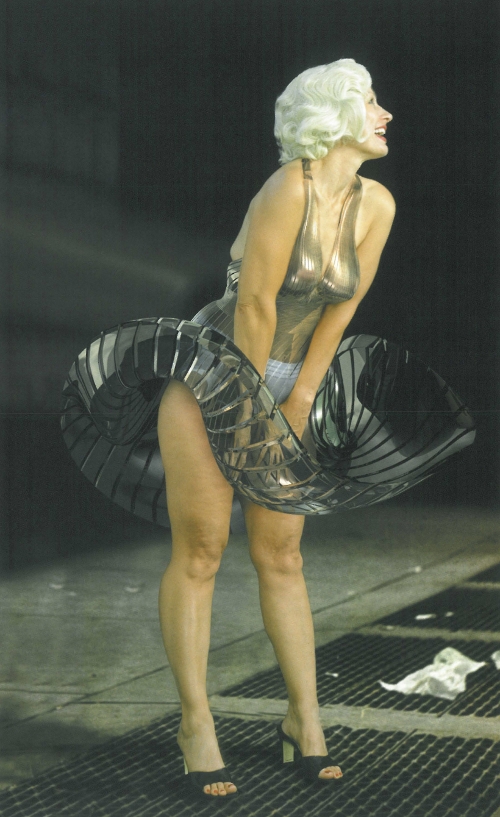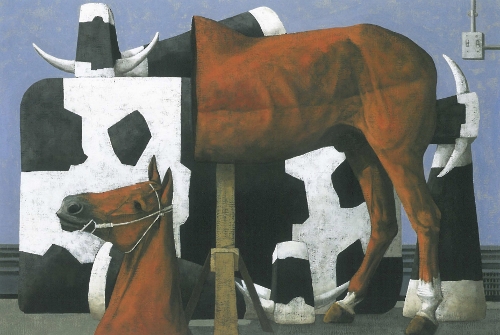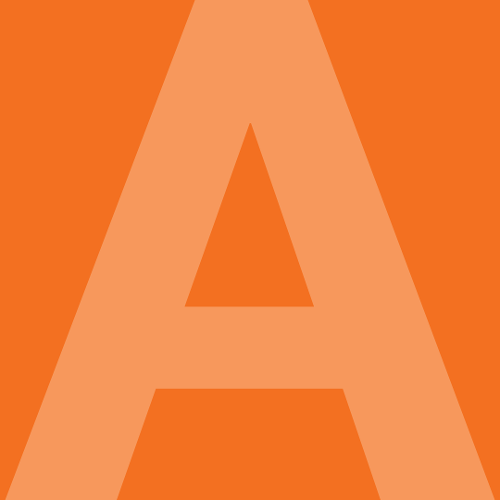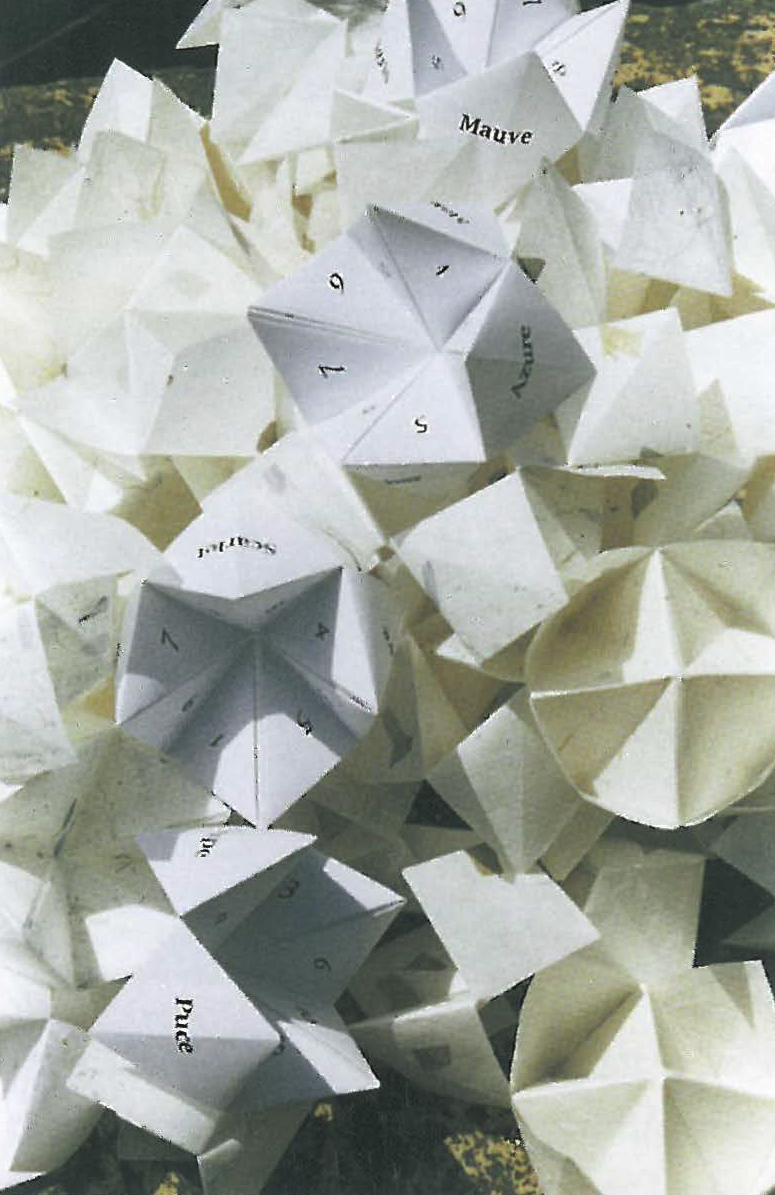
Artist and exhibition exchanges can take many forms but they all contain great potential benefits for artists and audiences. One major benefit is the opportunity for artists to share ideas and another is for organisations and groups across the country (or the world), to establish useful links. Touching from a distance was a pair of installations in Hobart and Perth. It grew out of a meeting between curators Julie-Ann Hall, (FOYeR in Hobart), and Andrew Nicholls, (Moore's Building - The Artists Foundation of WA (Perth), in Melbourne in 1998. Both were based in what they agreed were often 'marginalised' centres also sharing the maximum distance apart that any two Australian capitals could claim.
Hobart and Perth are both lively visual arts centres and possess a vibrant culture of emerging artists. Both the Moore's Building and FOYeR support experimental and emerging art and maintain continuous exhibition programs of contemporary art; where the two differ most is in scale. The Moore's Building is a cavernous converted warehouse with exhibition space over two floors. While FOYeR is also situated in an arts converted warehouse it is in fact a tiny space - one room connected to a small cafe. FOYeR is so intimate that one can be seated at the counter enjoying a coffee surrounded on three sides by the current installation.
That's where the curatorial aspects become interesting. How could two such divergent spaces effectively run a concurrent exhibition of the work of twelve artists in both spaces, in such a way that the two could be related in ways other than sharing the artists. Sensibly the curators did not ask the artists to do more than consider the difference and work accordingly. A further connection between artists was achieved by 'pairing' artists who would install each other's work in each venue, (one can't help assuming that the Tasmanian artists got the better part of that arrangement). As mentored emerging curator Tiia Covich writes in the catalogue "Touching from a distance acts to remind artists, curators and audiences of the fundamental importance of maintaining communication within and between communities".
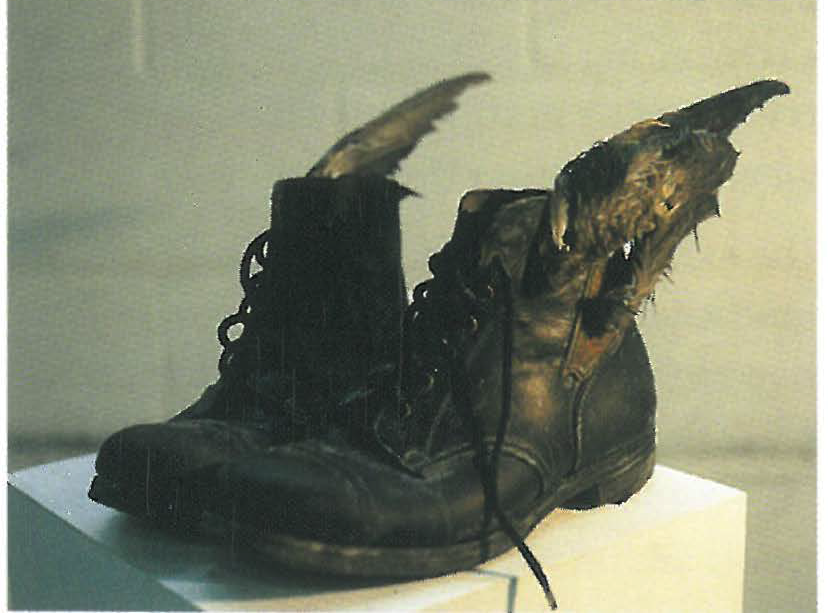
Among works represented there are some which mirror their distant siblings very closely while others diverge markedly (in format if not in content and method). John Vella's ongoing towel installation project is here manifest in Wet Spot, a large floor-based installation of towels and framed observations in Perth while in Hobart he shows a small frame containing threads from all the 110 towels in the Moore's Building. At FOYeR Linda Vujcich shows two of her exquisite tiny pianos with appliquéd photographic images, Player - Self Portrait while in Perth the audience is treated to a much more expansive display of the extended work. The only effective means of comparing the two installations was provided by videos of each displayed at the venues. These were rather basic in their production values and for that reason it is hard to make qualitative comparisons fairly.
Nonetheless in some cases it did appear that some work benefited from the smaller and tighter scale of the requirements of the Hobart venue, such as Maria Ainsley's Concertina Book in Hobart and Dialogue Mara and Violaine shown in Perth. While the Perth video lacked detail it appeared less cohesive than that imposed by the book form which contained its free abstract explorations of staining and sewing more effectively than the loose hanging format of large sheets of paper. I felt similarly about Bree Riseborough's Denied Touch which in Hobart consisted of a single sheet of stainless steel, a pair of scissors and suture thread and needle. The small, stark object contained the power to focus the harder elements of the work in an elegant format while the Perth installation containing more elements became more like a design exercise, albeit a refined and sophisticated one. In Julie Gough's case perhaps the opposite is true.
In Hobart her small piece of kelp containing a shell was almost too much like a shack culture token, sweet though it was, whereas her installation of ti tree sticks in Perth appeared to have greater intent, control and presence. Brigita Ozolins' Practice makes perfect was a small desk and book installation in Perth whereas Hobart showed a wall mounted wooden container of hand written postcards. This created a neat and witty dialogue of sent and received between the two works, further exploiting the aspects of distance and time which inform the project.
All artists responded well to the project and have managed to retain coherence between the two works for two spaces while providing audiences with a much needed chance to see the production of other places and other spaces.


